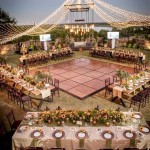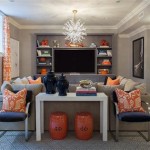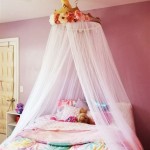Fancy Dining Room Table Decoration Ideas
The dining room table serves as a focal point for social gatherings, family meals, and celebratory events. Decorating this space enhances the overall ambiance of the dining room and elevates the dining experience. Choosing appropriate decorations requires attention to detail, considering factors such as the room's style, the occasion, and personal preferences. A well-decorated dining room table fosters a welcoming atmosphere and reflects the homeowner's aesthetic sensibility.
The purpose of this article is to provide a comprehensive guide to fancy dining room table decoration ideas. It explores various approaches, encompassing both formal and informal styles, and offers practical tips for creating visually appealing and functional table settings. By delving into different design elements and considering various styles, this article aims to equip readers with the knowledge and inspiration needed to transform their dining room tables into elegant and inviting spaces.
Selecting a Theme and Color Palette
The initial step in decorating a dining room table involves selecting a theme and color palette. The theme should align with the overall style of the dining room and the intended purpose of the table setting. A formal dinner party, for example, necessitates a more sophisticated and elegant theme than a casual family brunch. Common themes include classic, modern, rustic, and seasonal. Each theme lends itself to a particular aesthetic and influences the choice of materials and decorative elements.
The color palette should complement the theme and the existing décor of the dining room. Consider the color of the walls, flooring, and furniture when selecting colors for the table setting. A harmonious color palette creates a sense of visual unity and enhances the overall aesthetic appeal. Monochromatic schemes, which utilize different shades of a single color, offer a subtle and elegant look. Complementary color schemes, using colors that are opposite each other on the color wheel, create a bolder and more vibrant effect. Analogous color schemes, using colors that are adjacent to each other on the color wheel, offer a balanced and harmonious look.
Consider the season when choosing a color palette. Warm colors, such as reds, oranges, and yellows, are often associated with autumn and winter, while cool colors, such as blues, greens, and purples, are often associated with spring and summer. Incorporating seasonal colors into the table setting can add a festive and celebratory touch.
Choosing the Right Table Linens
Table linens form the foundation of a dining room table setting and play a crucial role in establishing the overall tone and style. The choice of tablecloth, placemats, napkins, and runners can significantly impact the visual appeal of the table. When selecting table linens, consider the size and shape of the table, the theme and color palette, and the level of formality desired.
A tablecloth provides a complete covering for the table and offers a formal and elegant look. Choose a tablecloth that drapes evenly and reaches approximately 12 inches below the edge of the table. Linen tablecloths are a classic choice for formal occasions, while cotton tablecloths are a more practical option for everyday use. For a less formal look, consider using a table runner instead of a tablecloth. A table runner is a long, narrow piece of fabric that is placed down the center of the table, adding a touch of elegance and style without completely covering the surface.
Placemats are individual coverings for each place setting and offer a less formal alternative to a tablecloth. Placemats protect the table from spills and scratches while adding visual interest to the table setting. Choose placemats that coordinate with the tablecloth, runner, or other table linens. Napkins are an essential element of any table setting. Linen napkins are a classic choice for formal occasions, while cotton napkins are a more practical option for everyday use. Fold napkins in various ways to add a touch of elegance and sophistication. Consider using napkin rings to further enhance the look.
The texture of the table linens also plays a significant role in the overall aesthetic. Smooth and silky fabrics create a formal and elegant look, while rough and textured fabrics create a more casual and rustic look. Consider the texture of the other decorative elements when selecting table linens to ensure a cohesive and harmonious design.
Incorporating Centerpieces and Decorative Accents
The centerpiece is the focal point of the dining room table and serves to draw the eye and create a sense of visual interest. The choice of centerpiece depends on the size and shape of the table, the theme and color palette, and the occasion. A well-chosen centerpiece can transform a plain table into a stunning display.
Floral arrangements are a classic choice for centerpieces. Choose flowers that coordinate with the color palette and theme of the table setting. Tall floral arrangements create a dramatic and elegant look, while low floral arrangements allow for easier conversation across the table. Consider using a variety of flowers and greenery to add texture and visual interest. Seasonal flowers add a festive and celebratory touch.
Candles are another popular choice for centerpieces. Candles create a warm and inviting atmosphere and add a touch of romance and elegance. Use a variety of candle heights and sizes to create a visually appealing display. Consider using scented candles to add a pleasant fragrance to the dining room. Ensure candles are placed safely away from flammable materials and are extinguished properly after use.
Other decorative accents can be incorporated into the table setting to add personality and visual interest. These accents can include decorative plates, bowls, figurines, and seasonal decorations. Scatter decorative items around the centerpiece to create a layered and textured look. Consider using natural elements, such as stones, shells, or branches, to add a touch of organic beauty. However, avoid cluttering the table with too many decorative items, as this can detract from the overall aesthetic and make it difficult for guests to dine comfortably.
Consider the scale and proportion of the decorative elements. Ensure that the centerpiece and other accents are appropriately sized for the table. A centerpiece that is too large can overwhelm the table, while a centerpiece that is too small can get lost in the overall setting. Maintain a balance between the size of the table and the size of the decorative elements.
Setting the Table with Dishware and Silverware
The choice of dishware and silverware contributes significantly to the overall aesthetic of the dining room table setting. Consider the theme and level of formality when selecting dishware and silverware. Formal occasions typically require fine china and silverware, while casual occasions allow for more relaxed and informal choices.
Fine china is a classic choice for formal dining. Choose a china pattern that complements the theme and color palette of the table setting. Consider using a charger plate beneath the dinner plate to add a touch of elegance and sophistication. A charger plate is a large decorative plate that is placed beneath the dinner plate and removed after the appetizer course. Coordinating the salad plate, soup bowl, and dessert plate with the dinner plate creates a cohesive and harmonious look. For casual occasions, stoneware or earthenware dishware is a more practical and durable option.
Silverware is an essential element of any table setting. Choose silverware that complements the dishware and the overall theme. Sterling silver silverware is a classic choice for formal occasions, while stainless steel silverware is a more practical option for everyday use. Proper silverware placement enhances the dining experience. Place the fork to the left of the plate, the knife to the right of the plate with the blade facing the plate, and the spoon to the right of the knife. Place the dessert spoon and fork above the plate. Follow established etiquette guidelines for proper table setting.
Glassware completes the table setting. Choose glassware that complements the dishware and silverware. Wine glasses are essential for formal occasions. Use different wine glasses for different types of wine. Water glasses should be placed above the knife. Consider using decorative glasses to add a touch of personality and visual interest. Crystal glassware adds a touch of elegance and sophistication. However, be mindful of the overall aesthetic and avoid using glassware that clashes with the other elements of the table setting.
Adding Personal Touches and Details
Personal touches and details elevate the dining room table setting from a mere arrangement of objects to a reflection of personal style and hospitality. These details communicate care and attention to detail, creating a more welcoming and memorable dining experience. The inclusion of personal elements should complement the overall theme and not overwhelm the existing design.
Personalized place cards add a touch of elegance and sophistication, especially for formal gatherings. Handwrite each guest's name on a card and place it on their plate or above their silverware. Consider using decorative place card holders to further enhance the look. Place cards can also serve as conversation starters, especially if they include a small, personal detail about each guest. These personal touches demonstrate thoughtfulness and create a sense of connection among guests.
Small favors or gifts presented at each place setting add a delightful surprise for guests. These can be small, inexpensive tokens that complement the theme of the event or reflect the host's personality. Examples include personalized chocolates, small candles, miniature plants, or hand-crafted items. The gift should be tasteful and not overly extravagant, as the intention is to express gratitude and create a positive memory. The wrapping and presentation of the favor should also align with the overall aesthetic of the table setting.
Unique serving dishes and utensils can also add a personal touch to the table setting. Instead of using standard serving pieces, consider incorporating vintage or antique dishes, hand-painted bowls, or uniquely designed utensils. These pieces add character and visual interest to the table. Choose serving pieces that complement the dishware and silverware and reflect the host's personal style. However, ensure that the serving dishes are functional and easy to use for serving food.
Finally, consider incorporating elements that reflect the season or the occasion. Seasonal flowers, greenery, or decorations can add a festive touch to the table setting. For example, pumpkins and gourds can be used for Thanksgiving, while pinecones and evergreens can be used for Christmas. Incorporating these elements adds a sense of celebration and creates a more memorable dining experience. However, avoid using overly elaborate or distracting decorations that could detract from the food and conversation.

10 Formal Dining Room Ideas From Top Designers

Dining Room Table Decor Ideas How To Decorate Your

85 Best Dining Room Ideas Designer

Top 100 Home Decor Club Formal Dining Room Beautiful Rooms Elegant

100 Stunning Designer Dining Room Ideas

25 Elegant Dining Table Centerpiece Ideas Room Traditional

Before After Formal Dining Room Ideas Decorilla

85 Best Dining Room Ideas Designer

Dining Room Table Ideas 15 Easy Decorating And Styling

19 Practical Solutions For Carpet In The Dining Room Elegant Traditional Rooms Design
Related Posts







